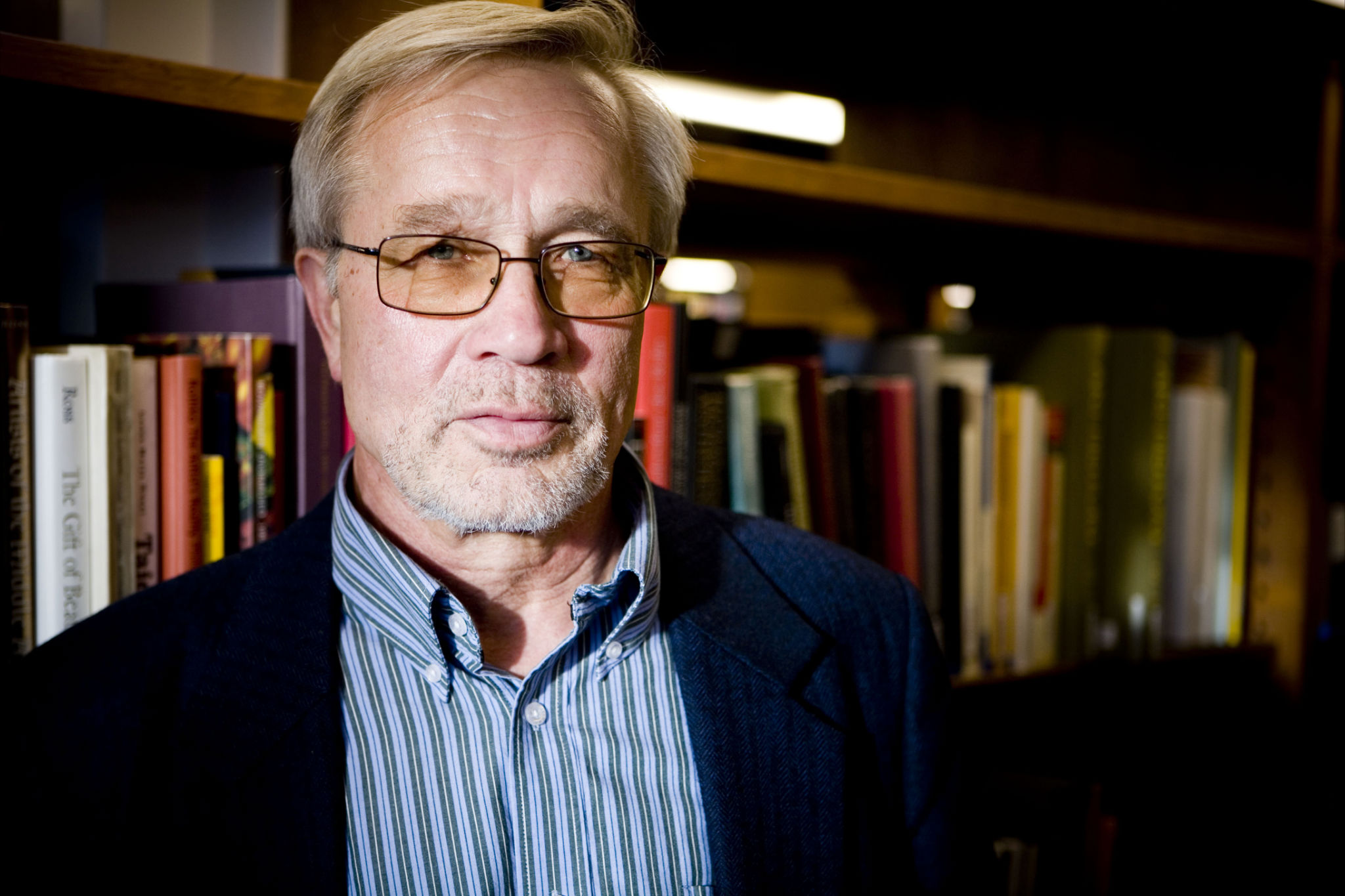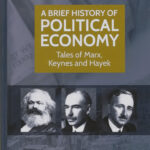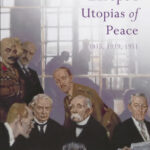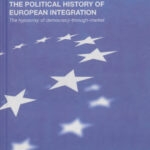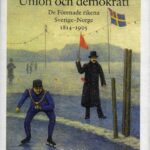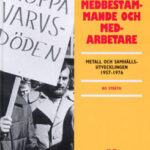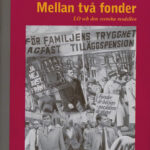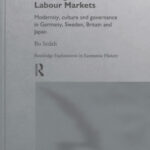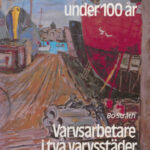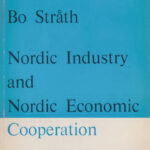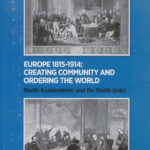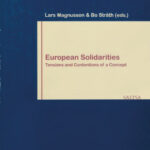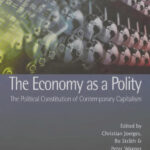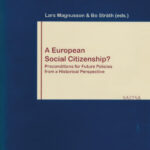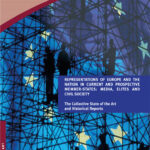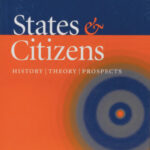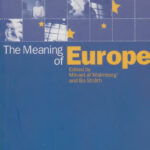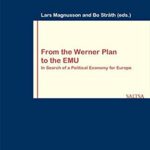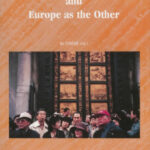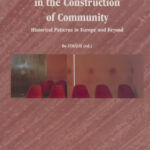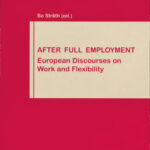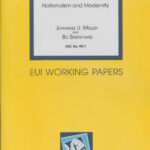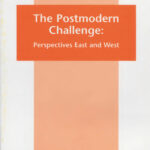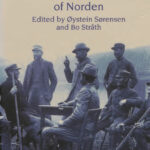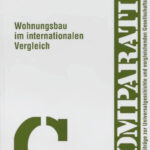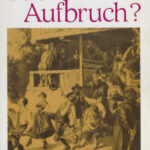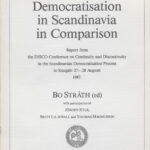Does Implementation Matter? Informal Administration Practices and Shifting Immigrant Strategies in Four Member States
European Framework Project at EUI 2000-2002
Coordinated by Bill Jordan, Bo Stråth and Anna Triandafyllidou
Border checkpoints tell travellers where political and military power merges with territorial
demarcation; the state monopoly of physical violence defines the territory and the control
of subjects living within the territory. Passports and identity cards define who belongs to a national
community of destiny and who does not.
Border control policies emerged from the developing system of nation-states in the nineteenth century
Europe; their context was the very different political histories of these states. For example, what
Britain and France had in common was their longstanding status as national polities; what
distinguished them was Britain’s pragmatic continuity in the accretion of citizens’ rights and
France’s revolutionary definition of the relationship between the state and citizenship (Jennings,
1995). Whereas Germany and Italy were products of nation-building in the second half of that
century, Greece – along with the other Balkan countries – had to win its independence from
Ottoman rule by force of arms; but what these three had in common was an ethnic definition of
citizenship, forged from the cultural resources of that era’s nationalist movements.
The troubled history of twentieth-century Europe bequeathed the legacies of imperialism (creating
longstanding ties with countries outside the Continent), war (leading to economic blockades,
disputed boundaries and mass flows of refugees) and ideological confrontation (the Iron Curtain,
and especially the Berlin Wall, as the ultimate form of border control). But the second half of the
century saw a convergence in the conceptions of citizenship in West European countries around
democratic decision-making, mixed economies and social protection, enabling the development of
the Single Market and the principle of the free movement of labour. Co-ordination of economic
and social policies among the member states of the EU seemed to offer the prospect of reduced
significance for border controls of all kinds within Europe.
In one sense it is therefore surprising that border control policy has re-emerged in the past 10
years as a major policy concern for the EU and its member states. But even discounting the
consequences of the collapse of the Soviet Union and its satellite states, and especially of the
conflicts in the Balkans and Caucasus, this heightened significance can be understood in terms of a
global shift in systems for sustaining social order among populations. The border regime that
prevailed in Europe at the end of the 1980s, reflected a well-established system of national labour
markets, in which trade unions had a strong interest in sustaining stability and control in return for
economic partnership and social protection. This system has led to virtual zero labour migration in
the EU for the previous 20 years; it was reinforced by institutions such as the Common
Agricultural Policy and the Cohesion Funds, which redistributed to poor regions that had been
sources of migrant labour in the postwar period (Ireland, Spain, Portugal, Greece and Southern
Italy in particular).
The preconditions of this order changed fundamentally at the end of the 20th century when the
industrial society was transformed into an information society. The organisation of the labour market
underwent a deep transformation. In the old order, capital investments in factories lasted decades and were as easy to control as the labour working there. In the new order, capital became more transient and less tied to physical investments. Portfolios replaced machines, and investment ignored borders in a way that the factories never could. The labour force became much less substitutable and more specialised, less homogeneous and
hierarchically organised, with growing marginalisation and segmentation in labour markets. Trade
unions lost control of the labour supply, and the governments lost much of their control of
capital. The goal became less to control the labour supply at the borders in general terms, as in
the old order, with a growing inlet when the labour markets were tight and a more restrictive
practice when unemployment grew. In the new emerging order of flexible labour markets, low-wage
foreign workers are in demand for public or private service jobs, and it is difficult to recruit
domestic workers. High-wage foreign employees are demanded for jobs which require specific
competence and where the domestic supply is insufficient. The control fears move from the
borders to the new kinds of workplaces. Borders are becoming more porous.
At the same time, new issues confront the custodians of the borders and those operating internal
controls of labour markets and welfare systems. The end of the Cold War, political instability and
civil war in Africa, Central Asia and the former Yugoslavia, and improved access to
intercontinental transport contributed to increased migration flows from outside Europe.
These presented themselves to the authorities in the form of steeply rising applications for asylum
and undocumented immigrant workers occupying niches in European labour markets
when unemployment stood at a postwar high. In the 1990s, EU member states overhauled their
asylum regimes, adopting more deterrent and restrictive, less welfare-orientated systems and tightening external border controls at the periphery of the Union (Fortress Europe).
But even these measures are now considered inadequate because they do not address other
aspects of economic globalisation and the international division of labour. The EU is moving
towards a ‘coordinated immigration policy’ that includes a common European asylum
system and a framework for managing labour market needs. On the latter point,
‘Admission for economic migrants’ should address the needs of the marketplace place,
particularly for the highly skilled, lesser or unskilled workers or seasonal
labour. Admission policies for economic migrants must enable the EU to respond quickly
and efficiently to national, regional and local labour market requirements,
recognising the complex and rapidly changing nature of these requirements and, consequently, the need for greater mobility between Member States for incoming migrants. (Vitorino, 2001, sec.3.3)
In connection with this last shift, the guardians of the border must, therefore, change towards
practices that are refocused on recruitment and are ‘user-friendly’, rather than ones that are
concerned with control alone. Whether ‘user-friendly’ should be understood in terms of an
orientation towards the employers who want to hire or towards the labour in demand is an open
question. It is unclear who are the users of the new kind of immigration service. The civil
servants who meet the immigrants develop a new kind of corps d’esprit with a cooperative
teamwork spirit of being service workers rather than border guardians and with more discretionary
power than in the old order based on a Weberian ideal of a rule-implementing bureaucracy. It can
always be debated to what extent the implementation of rules in that order occurred without
discretionary interpretation. It seems clear, however, that a change has occurred, at least as to the
images, the ideals, and the self-understanding of the immigration administrations.
The key question of this project is how this transformation of the border regime affects the
administrative practices and the implementation of the immigration policies. Four countries have
been selected to analyse this question: the UK, Germany, Italy and Greece. Two of them are
old immigration countries, while in the two other countries, immigration is a recent phenomenon. Two of
them belong in the popular and common images of a North European Weberian bureaucratic
culture, and two of them to a South European pattern of much more discretionary administrative
power. We will, through comparative analysis, discuss how relevant these distinctions are in today’s
context.
The EU approach by the Commission and the Member State governments to the development as it
has been outlined here is contradictory. Border controls within the EU have been abolished to
allow for the free movement of goods and persons. Economic transaction costs are reduced, and
more efficient markets emerge. This is the philosophy of the internal market, which goes hand in
hand with the ideal of the European citizen.
However, demolishing the internal borders results in the creation of external borders. Old
walls disappear, and new ones emerge. The EU Member States do not all agree on the shape of the
external borders. All Member States do not participate in the Schengen order. The insight and
the ‘user-friendly’ interest in more porous borders go hand in hand with an interest in re-creating
control. The interest in a more flexible supply of labour goes hand in hand with the interest in
immigration control to prevent the import of criminality and financial pressures on the welfare
systems through migrants who do not contribute to the labour market supply. The worry of an
invasion of Polish labour after the European reunification, expressed by the German Chancellor
Gerhard Schröder demonstrates even more contradictions, where the interest in flexible labour
market supply goes hand in hand with a deep concern for cheap labour dumping. The large-scale
landing operations with refugees from Africa, Asia and Eastern Europe on the Italian and French
coasts raise claims for physical control of the coasts and of the border lines. The control by the military
and police gets support through new tasks for the air companies and the shipowners in a kind of
outsourcing of the control function.
The 15 EU Member States have not yet found a common formula for controlling the external
borders. There are various opinions among the governments about the penalty level for the smuggling
of human beings and the extent of humanitarian exception clauses. Not least, the German
experience of aid to refugees during the Nazi and the GDR regimes calls for caution. This caution
is opposed by the idea of rigid rules and severe penalties as an instrument against organised
criminality in the form of large-scale transports of human beings over land and sea borders. The
German Minister of Domestic Affairs Otto Schilly suggested at an EU meeting with his colleagues
in March 2001 the long-term development of a European police force to control the borderlines of
EU. The background was a doubt that Poland and Slovenia could comply with this control
as EU members and, therefore, need assistance.
In the short run, it is difficult to imagine unanimity among the 15 governments. On
the other side, the EU Parliament pushed for a European asylum and immigration policy and
rejected in March 2001 almost unanimously five proposals (directives? Check) in this direction because they contained too many exceptions for individual Member States.
There is not a coherent EU immigration policy. The landscape of directives is complex.
What are against this backdrop of EU rules and the preconditions of their implementation?
We do not, as a point of departure, imagine the implementation of the EU policies as a straight top-down
a process where a policy decision at the EU level is progressively transferred to the political targets.
Rather, implementing a specific European text is part of a complex entanglement of
dynamic interactions across a multilevel and multicentred policy order. Broader national and more
narrow administrative patterns of culture and traditions, expressed as xenostereotypes, for instance,
orient administrative practices in various directions.
This does not mean that the development is predetermined. Development paths are constructed by
historians when they in retrospect, analyse what has happened. Cultural and historical heritages play
a role but in what direction they affect actions is an open question. This open area of administrative
practices we want to map out and, in retrospect, reflect on the role of culture and traditions by
comparing how four national administrations have developed practices in response to the same
problem and the same rule-setting framework. We want to relate our results to the trend within EU
towards soft law and the method of open co-ordination instead of hard law and harmonisation, a
trend where the degree of discretion is unavoidably increasing. In particular, in the immigration policy
area, there is an entanglement of hard law and soft law that gives specific preconditions for the
implementation.
